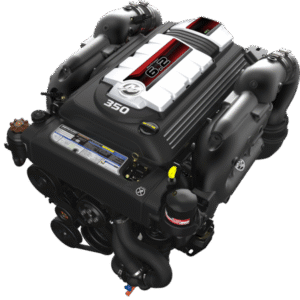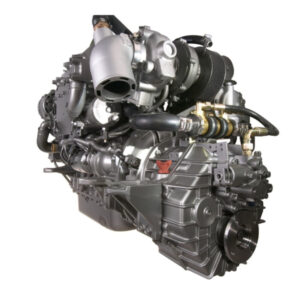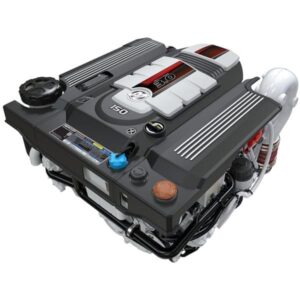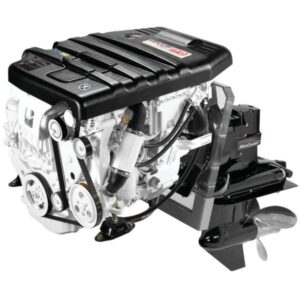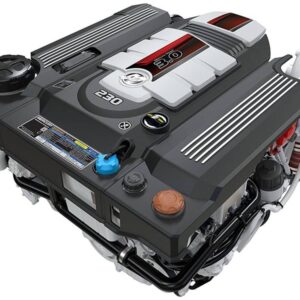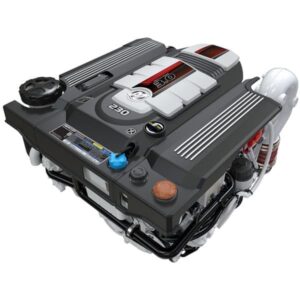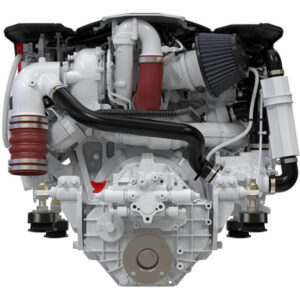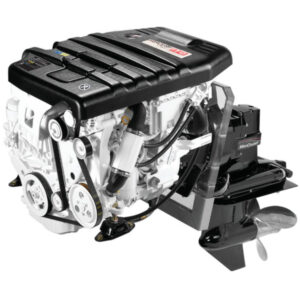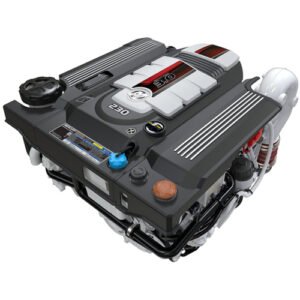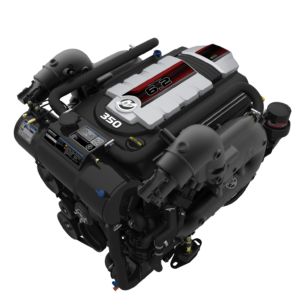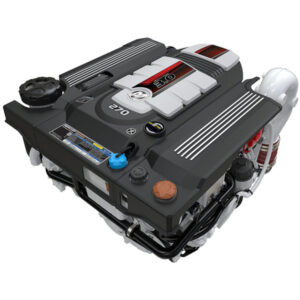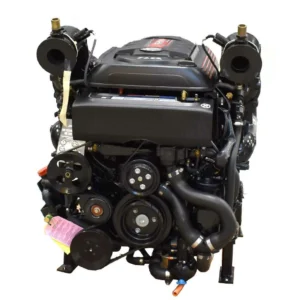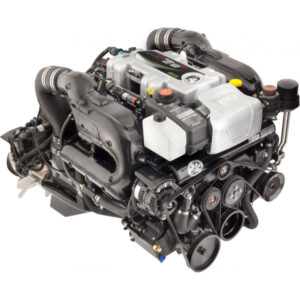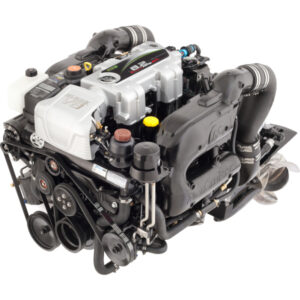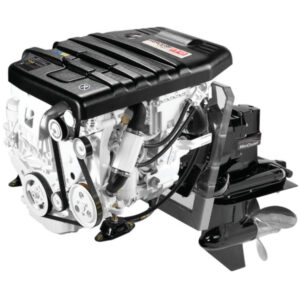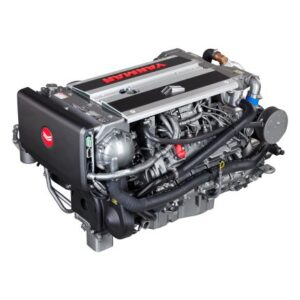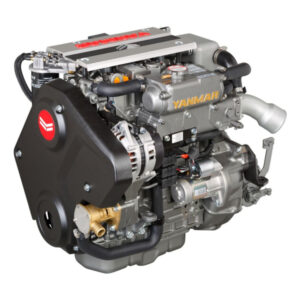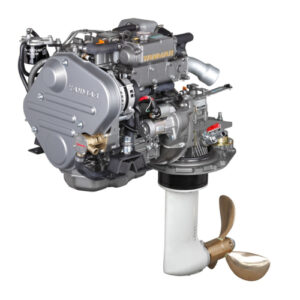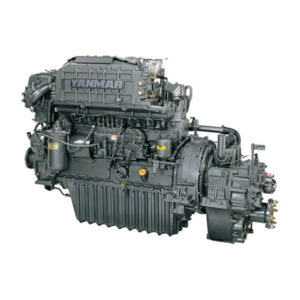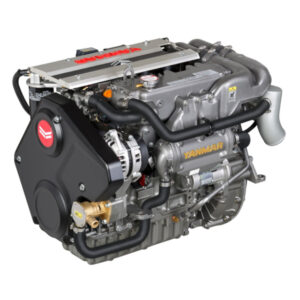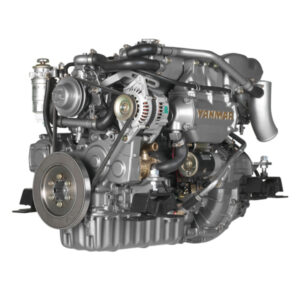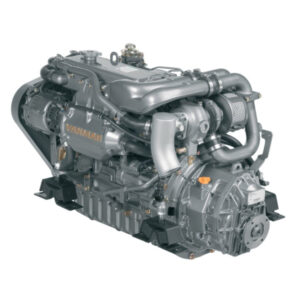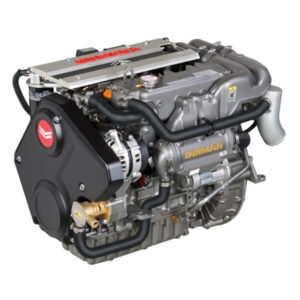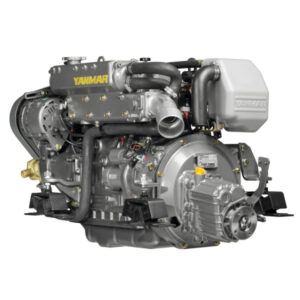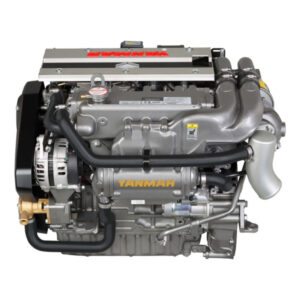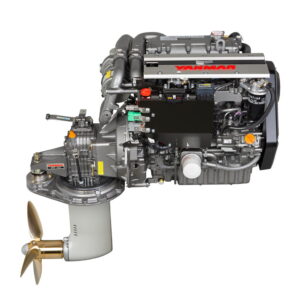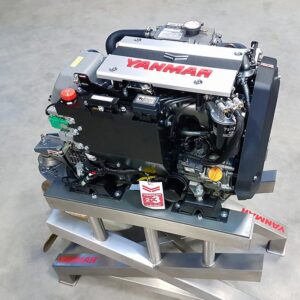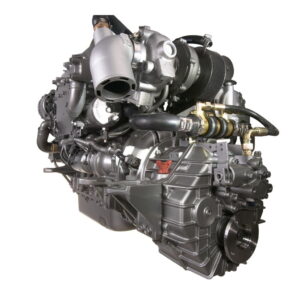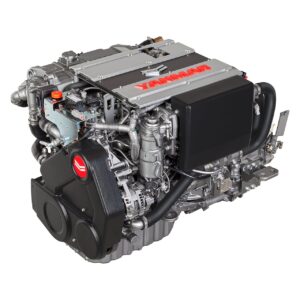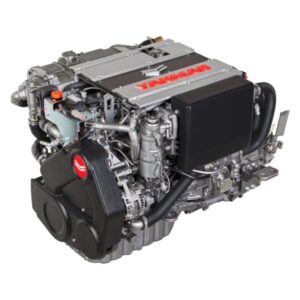Inboard Engines: A Complete Guide to Power, Performance, and Marine Reliability
In the world of marine propulsion, inboard engines are the powerhouse that keep boats gliding smoothly through the water. Whether you’re into cruising, fishing, or watersports, understanding how inboard engines work—and their advantages over other propulsion systems—can help you make informed decisions when buying or upgrading a boat.
In this comprehensive guide, we’ll explore what inboard engines are, how they work, their types, advantages, maintenance needs, and how they compare to outboard and sterndrive engines. If you’re looking to boost your marine knowledge or find the best inboard engine for your boat, you’re in the right place.
What Is an Inboard Engine?
An inboard engine is a type of marine propulsion system that is mounted inside the hull of the boat, typically near the center. The engine drives a propeller shaft that exits the hull and turns a fixed propeller. Steering is usually achieved using a rudder, which is positioned behind the propeller.
Key Characteristics:
-
Location: Housed within the boat hull.
-
Drivetrain: Connected to a propeller shaft.
-
Steering Mechanism: Uses a rudder system.
-
Cooling System: Typically water-cooled using raw water from the sea or lake.
Types of Inboard Engines
There are several types of inboard engines, each suited to specific boating needs:
1. Gasoline Inboard Engines
These engines are lightweight, affordable, and suitable for smaller pleasure boats. They’re common in watersports boats, runabouts, and family cruisers.
2. Diesel Inboard Engines
Known for durability and fuel efficiency, diesel engines are ideal for larger boats and long-distance cruising. Commercial vessels, yachts, and trawlers often rely on diesel inboard engines.
3. Jet Inboard Engines
A variation where the inboard engine drives a water jet rather than a traditional propeller. These are popular in jet boats and are ideal for shallow waters.
4. Electric Inboard Engines
Gaining popularity for their eco-friendliness and silent operation. Perfect for sailboats and recreational users looking for a clean-energy option.
How Do Inboard Engines Work?
An inboard engine works similarly to a car engine but is adapted for marine use. Here’s a step-by-step overview:
-
Power Generation: The engine combusts fuel (gasoline or diesel) to generate mechanical power.
-
Transmission: The power is transferred through a marine transmission to a drive shaft.
-
Propeller Drive: The drive shaft exits the hull and turns the propeller, pushing the boat forward.
-
Steering: A rudder changes direction by redirecting water flow behind the propeller.
Advantages of Inboard Engines
1. Stability and Balance
Because inboard engines are mounted centrally, they help balance the boat and improve overall stability, especially in rough waters.
2. Power and Performance
Inboards are generally more powerful than outboards, making them suitable for larger boats and commercial use.
3. Long Lifespan
Inboard engines are built to last. With proper maintenance, they can outlive outboard engines by several years.
4. Better for Towing
Inboard engines offer better wake control, making them a top choice for wakeboarding and waterskiing.
5. Lower Theft Risk
Since they’re built into the hull, inboard engines are harder to steal compared to detachable outboards.
Disadvantages of Inboard Engines
No engine is perfect. Here are some drawbacks of inboards:
1. Complex Installation and Maintenance
Inboards are more complex to install and repair. Accessing engine parts often requires dismantling sections of the boat.
2. Cost
The initial cost and maintenance of inboard engines tend to be higher than outboard options.
3. Fixed Propeller
The fixed propeller and rudder setup can be damaged if you run aground or hit debris.
Inboard vs. Outboard Engines: Which Is Better?
Choosing between inboard vs outboard engines depends on your boating needs.
| Feature | Inboard Engine | Outboard Engine |
|---|---|---|
| Position | Inside the hull | Mounted on the transom |
| Power | More powerful | Less powerful |
| Fuel Efficiency | High (especially diesel) | Moderate |
| Steering | Via rudder | Direct motor steering |
| Ease of Access | More difficult | Easier to maintain |
| Space | Takes up interior space | Frees up interior space |
Inboards are better for large boats, watersports, and commercial use, while outboards are best for small boats and casual use.
Inboard Engine Maintenance Tips
Regular maintenance can significantly extend the life of an inboard engine. Here’s a quick checklist:
1. Change Oil Regularly
Use marine-grade oil and replace it every 50-100 hours of use or as recommended by the manufacturer.
2. Inspect Cooling System
Flush the raw water system after every saltwater outing and check the impeller and hoses regularly.
3. Check Transmission Fluid
Transmission maintenance is crucial for smooth operation. Top off and replace fluid as needed.
4. Clean Fuel System
Change the fuel filter regularly and use fuel stabilizers to prevent gumming.
5. Inspect Shaft and Propeller
Ensure there’s no debris wrapped around the shaft and that the propeller is not bent or damaged.
6. Winterization
In cold climates, winterize your engine by draining water, adding antifreeze, and fogging the cylinders.
Top Brands for Inboard Engines
Here are some of the leading manufacturers of inboard marine engines:
1. MerCruiser
A division of Mercury Marine, known for high-performance gasoline inboard engines.
2. Volvo Penta
Offers both diesel and gasoline inboards, known for innovative features like Forward Drive.
3. Yanmar
A leader in marine diesel engines with a reputation for durability and efficiency.
4. Cummins
Provides powerful diesel inboards for commercial and recreational vessels.
5. PCM (Pleasurecraft Marine)
Specializes in inboards for watersports boats, offering high torque and smooth acceleration.
Popular Boats with Inboard Engines
Inboard engines are commonly found in:
-
Ski boats and wakeboard boats
-
Cruisers and cabin boats
-
Yachts
-
Fishing trawlers
-
Sailboats with auxiliary engines
Are Inboard Engines Right for You?
If your boating activities include long-distance cruising, watersports, or operating a larger vessel, then an inboard engine is likely the best choice. They offer the best balance of power, reliability, and performance—especially when you’re not concerned with portability or shallow water maneuverability.
However, for smaller boats, lake fishing trips, or easy trailering, you might want to consider an outboard or a sterndrive engine instead.
SEO Keywords to Consider
To optimize this article for SEO, the following target keywords are naturally integrated throughout:
-
Inboard engines
-
Marine inboard engine
-
Gasoline inboard engine
-
Diesel inboard motor
-
Inboard vs outboard
-
Inboard boat engine maintenance
-
Best inboard engine brands
-
Inboard propulsion system
Final Thoughts
Inboard engines remain a staple in the marine propulsion world, particularly for those who prioritize power, durability, and performance. With the right care and application, an inboard engine can provide years of dependable service on the water.
When selecting a marine engine, always factor in your vessel type, usage goals, budget, and maintenance capabilities. By doing so, you’ll ensure your boat is powered by an engine that meets your exact needs—whether that’s a fuel-efficient diesel inboard or a high-performance gas engine for pulling wakeboarders.
Inboard Engines
Showing 1–30 of 59 results
-
Inboard Engines
Buy New Mercury 350 HP ECT 6.2L Inboard Engine for sale
A 6.2-liter V-8 engine with unparalleled torque and acceleration to get you on plane quickly and smoothly. Power and acceleration is delivered with 6.2 liters of displacement and a long-runner scroll intake manifold that optimizes air flow for higher torque. A 6.2-liter V-8 engine with unparalleled torque and acceleration to get you on plane quickly and smoothly.
SKU: n/a -
Inboard Engines
BuyNew Yanmar 4LHA-STP (Z) 240HP Inboard Diesel Engine for sale
LH Series 118–177kW (116–240HP) Tough, reliable, compact and with outstanding power-to-weight benefits, these four-cylinder direct injection Yanmars in the LH Series include sterndrive models. The turbocharger has a wastegate boost compensator to improve acceleration still further. LH Series 4LHAM-STP (240HP/177kW) Tough and dependable high-output four-cylinder diesel, turbocharged and aftercooled. Develops 240HP (177kW) at 3,300 rpm. Supplied as bob-tail unit so that you can choose your transmission type
SKU: n/a -
-
Inboard Engines
Mercury 170 TIER 3 172.4 HP 2.0L Inboard Diesel Engine
Mercury Marine has established itself as a pioneering leader, especially known for its reliable and innovative outboard and inboard engines. One of the standout products in its diesel engine lineup is the Mercury 170 TIER 3 172.4 HP 2.0L Inboard Diesel Engine. Engineered for durability, efficiency, and superior power delivery, this compact diesel inboard engine meets stringent emission regulations and is tailored for a range of commercial and recreational marine applications.
SKU: n/a -
Inboard Engines
Mercury 230 HP 3.0L Inboard Diesel Engine
If you’re searching for a high-performance marine engine that blends fuel efficiency, durability, and power, look no further than the Mercury 230 HP 3.0L Inboard Diesel Engine. Manufactured by Mercury Marine, a global leader in marine propulsion, this engine has become a top choice for commercial vessels, recreational boats, and government marine applications alike.
SKU: n/a -
Inboard Engines
Mercury 230 HP Sterndrive 3.0L Inboard Diesel Engine
Buy New Mercury 230 HP Sterndrive 3.0L Inboard Diesel Engine for sale online, When it comes to performance, reliability, and efficiency in marine engines, the Mercury 230 HP Sterndrive 3.0L Inboard Diesel Engine stands out as a top choice for boat owners.
SKU: n/a -
Inboard Engines
New Mercury 150 HP Sterndrive 3.0L Inboard Diesel Engine for sale
Mercury Diesel’s 3.0L engine simplifies maintenance by locating service points at the front of the engine. The oil, coolant, fuse box, seawater strainer, drive lube (sterndrive only) and power steering fluid (sterndrive only) service points are located at the front of the engine next to Mercury’s color-coded maintenance schedule to provide easy-to-understand service guidelines and easy-to-reach access.
SKU: n/a -
Inboard Engines
New Mercury 170 TIER 3 172.4 HP 2.0L Inboard Diesel Engine for sale
Clean, Quiet, Efficient: DI technology uses injectors to spray diesel fuel atomized at 26,000 psi directly into the main combustion chamber of each cylinder. This process optimizes fuel efficiency and minimizes emissions, along with engine Noise, Vibration and Harshness (NVH) for an enjoyable boating experience.
SKU: n/a -
Inboard Engines
New Mercury 230 HP 3.0L Inboard Diesel Engine for sale
Mercury Diesel’s 3.0L engine simplifies maintenance by locating service points at the front of the engine. The oil, coolant, fuse box, seawater strainer, drive lube (sterndrive only) and power steering fluid (sterndrive only) service points are located at the front of the engine next to Mercury’s color-coded maintenance schedule to provide easy-to-understand service guidelines and easy-to-reach access.
SKU: n/a -
Inboard Engines
New Mercury 230 HP Sterndrive 3.0L Inboard Diesel Engine
The New Mercury 230 HP Sterndrive 3.0L Inboard Diesel Engine is a perfect blend of power, efficiency, and modern technology. Designed for boaters who demand high performance, reliability, and ease of use, this engine ensures a superior on-water experience. From family cruisers to commercial vessels, the Mercury 230 HP diesel engine meets the needs of every boater seeking dependable and efficient marine propulsion.
SKU: n/a -
Inboard Engines
New Mercury 270 HP Sterndrive 3.0L Inboard Diesel Engine for sale
Mercury Diesel’s 3.0L engine simplifies maintenance by locating service points at the front of the engine. The oil, coolant, fuse box, seawater strainer, drive lube (sterndrive only) and power steering fluid (sterndrive only) service points are located at the front of the engine next to Mercury’s color-coded maintenance schedule to provide easy-to-understand service guidelines and easy-to-reach access.
SKU: n/a -
Inboard Engines
New Mercury 370 HP 6.2L Jet Inboard Engine
The New Mercury 370 HP 6.2L Jet Inboard Engine is not just a marine engine—it’s a revolution in power, performance, and versatility. With its advanced jet propulsion, robust V8 power, fuel efficiency, and user-friendly design, this engine sets a new standard for inboard marine propulsion.
SKU: n/a -
Inboard Engines
New Mercury 380 HP 8.2 MAG ECT 8.2L Inboard Engine for sale
A high-displacement footprint allows the V-8s to work smarter – not harder – with lower max rpm to ensure longer engine life. Engine Guardian is standard and averts potential problems with timely intervention, while the Cool Fuel Module prevents vapor lock. Long runner intakes pack more air into the chamber, while the advanced MPI system fine-tunes the fuel-to-air mix, producing more power on combustion. High performance aluminum cylinder heads improve mid-range acceleration. Optional SmartCraft® Digital Throttle & Shift provides silky-smooth operation.
SKU: n/a -
Inboard Engines
New Mercury 430 HP 8.2 MAG H.O ECT 8.2L Inboard Engine
The new Mercury 430 HP 8.2 MAG H.O ECT 8.2L Inboard Engine represents the pinnacle of marine engineering. With advanced technologies, robust design, and incredible performance, it offers everything modern boaters demand. From exhilarating speed to dependable reliability, this engine is ready to transform your time on the water.
SKU: n/a -
Inboard Engines
New Mercury Diesel 115 HP 2.0L Inboard Diesel Engine for sale
Clean, Quiet, Efficient: DI technology uses injectors to spray diesel fuel atomized at 26,000 psi directly into the main combustion chamber of each cylinder. DI technology uses injectors to spray diesel fuel atomized at 26,000 psi directly into the main combustion chamber of each cylinder. This process optimizes fuel efficiency and minimizes emissions, along with engine Noise, Vibration and Harshness (NVH) for an enjoyable boating experience.
SKU: n/a -
Inboard Engines
New Yanmar 1GM10 9HP Inboard Diesel Engine
The New Yanmar 1GM10 9HP Inboard Diesel Engine is an excellent choice for boat owners seeking a reliable, compact, and fuel-efficient engine. With its proven durability, low maintenance requirements, and versatility, it has earned its place among the most trusted small marine diesel engines on the market.
SKU: n/a -
Inboard Engines
New Yanmar 3JH40 40HP Smallest CR Inboard Diesel Engine for sale
The 3-cylinder 3JH40 has been developed by leading manufacturer YANMAR as the marine industry’s smallest CR inboard diesel engine. With an output of 40 mhp, it will enable a whole new category of smaller leisure boat owners and commercial vessel operators to benefit for the first time from the efficiency and performance advantages associated with the most recent electronically-managed CR fuel-injection technology.
SKU: n/a -
Inboard Engines
New Yanmar 3JH5E 39HP Inboard Diesel Engine for sale
YANMAR engines have become the global standard in sailboat and small craft propulsion. Bringing common rail technology to smaller applications, YANMAR exclusively provides the benefits of fuel efficiency, added power, and cleaner operation. With 4 power ratings across one design, the 4JH-CR engine is the perfect solution to fit across a wide variety of boats sizes and applications. And with a similar footprint to previous models and competition alike, it is the ideal choice for repowers.
SKU: n/a -
Inboard Engines
New Yanmar 4CHE3 78 HP Propulsion Engines for sale
Yanmar’s successful wave-ribbed ‘monoblock’ cylinder block, stampforged carbon steel crankshafts and connecting rods are part of the story of strength in all CH engines. They also have a special thermocontrolled, fresh water cooling system that keeps all vital parts at optimum operating temperature, greatly saving wear and prolonging engine life. Another great advantage is the latest Yanmar marine gear, carefully matched by our own technicians to make the ideal combination of strength and smooth power drive.
SKU: n/a -
Inboard Engines
New Yanmar 4JH110 110HP Inboard Diesel Engine for sale
JH Series 28.7–92kW (39–125HP) Three and four-cylinder direct injection diesels with heat exchanger cooling. Choices of natural aspiration, turbocharged and turbo/aftercooler models, with straight drive or angle drive transmissions. Smaller horsepower models are also offered with Saildrive units. JH Series 4JH4-TE (75HP/55kW) ighly efficient and light in weight, this tough four-cylinder diesel is available with straight or angle drive, mechanically or hydraulically activated.
SKU: n/a -
Inboard Engines
New Yanmar 4JH3-DTE 125HP Inboard Diesel Engine for sale
The new 4JH4-TE (turbo), the 4JH4-THE (intercooler-turbo) and the 4JH3-DTE (hi-power intercooler turbo), create a family of three lightweight, user-friendly, clean, thrifty and reliable marine diesel engines that are available in shaftdrive and saildrive configurations.
SKU: n/a -
Inboard Engines
New Yanmar 4JH4-HTE 110HP Inboard Diesel Engine for sale
JH Series 28.7–92kW (39–125HP) Three and four-cylinder direct injection diesels with heat exchanger cooling. Choices of natural aspiration, turbocharged and turbo/aftercooler models, with straight drive or angle drive transmissions. Smaller horsepower models are also offered with Saildrive units. JH Series 4JH4-HTE (100HP/74kW) Light, compact, powerful, clean running four-cylinder diesel, developing 100HP (74kW) at 3,800 rpm. Straight or angle transmission, mechanical or hydraulic.
SKU: n/a -
Inboard Engines
New Yanmar 4JH45 45HP Inboard Diesel Engine for sale
YANMAR’s new generation JH-Common Rail Series with class leading features out performs its competition. Compact, powerful, smooth, quiet, efficient and interconnective, the JH-CR Series is perfect for any application whether rib, tender, sailboat or catamaran, new or re-power. With over a 100 years of innovation, unequaled reliability, and the largest marine engine global service network, choosing a YANMAR ensures you will enjoy many safe and carefree years on the water.
SKU: n/a -
Inboard Engines
New Yanmar 4JH45E 53.8HP Inboard Diesel Engine for sale
JH Series 28.7–92kW (39–125HP) Three and four-cylinder direct injection diesels with heat exchanger cooling. Choices of natural aspiration, turbocharged and turbo/aftercooler models, with straight drive or angle drive transmissions. Smaller horsepower models are also offered with Saildrive units. JH Series 3JH4 (39HP/28.7kW) The Yanmar’s 3JH4 is an all-new naturally aspirated engine for sailboats and motor craft – quieter, cleaner and producing more torque – with the largest displacement and smallest dimensions in its class. It’s fullfy compliant with EPA Tier 2 emissions regulations and with BSO/SAV Stage 2 requirements.
SKU: n/a -
Inboard Engines
New Yanmar 4JH57 57HP Inboard Diesel Engine for sale
YANMAR’s new generation JH-Common Rail Series with class leading features out performs its competition. Compact, powerful, smooth, quiet, efficient and interconnective, the JH-CR Series is perfect for any application whether rib, tender, sailboat or catamaran, new or re-power. With over a 100 years of innovation, unequaled reliability, and the largest marine engine global service network, choosing a YANMAR ensures you will enjoy many safe and carefree years on the water.
SKU: n/a -
Inboard Engines
New Yanmar 4JH80 80HP Inboard Diesel Engine
The New Yanmar 4JH80 80HP inboard diesel engine combines reliability, fuel efficiency, and compact design to deliver exceptional performance for sailboats and powerboats alike. With low emissions, quiet operation, and a long service life, it represents a smart investment for modern mariners seeking consistent power and peace of mind on the water.
SKU: n/a -
Inboard Engines
New Yanmar 4LHA-DTP (Z) 200HP Inboard Diesel Engine
For boat owners and marine operators seeking a reliable, efficient, and powerful inboard diesel engine, the Yanmar 4LHA-DTP (Z) 200HP stands as a premier choice. Its combination of power, fuel efficiency, quiet operation, and durability ensures that every voyage is smooth, safe, and enjoyable. Investing in a Yanmar engine means investing in years of reliable performance backed by a global network of support.
SKU: n/a -
Inboard Engines
New Yanmar 4LHA-HTP (Z) 160HP Inboard Diesel Engine
The Yanmar 4LHA-HTP (Z) 160HP inboard diesel engine is a powerful, efficient, and reliable solution for modern boating. Whether you are a recreational sailor seeking smooth cruising or a commercial operator requiring dependable performance, this engine meets and exceeds expectations.
SKU: n/a -
Inboard Engines
New Yanmar 4LV170 (Z) 170HP Inboard Diesel Engine
The Yanmar 4LV170 (Z) 170HP inboard diesel engine represents a perfect blend of power, efficiency, and reliability. Whether you are upgrading an older vessel or equipping a new build, this engine delivers exceptional performance and peace of mind. With its innovative technology, compact design, and environmentally conscious engineering, the 4LV170 (Z) is an excellent investment for both recreational and commercial marine operations.
SKU: n/a -
Inboard Engines
New Yanmar 4LV195 (Z) 195HP Inboard Diesel Engine
For boat owners seeking a high-performance, reliable, and efficient marine engine, the Yanmar 4LHA-DTP (Z) 200HP inboard diesel engine stands out as a premium choice. Its turbocharged power, advanced fuel system, compact design, and low emissions make it ideal for a wide range of marine applications. Whether for commercial use, luxury cruising, or recreational boating, this engine ensures smooth
SKU: n/a

